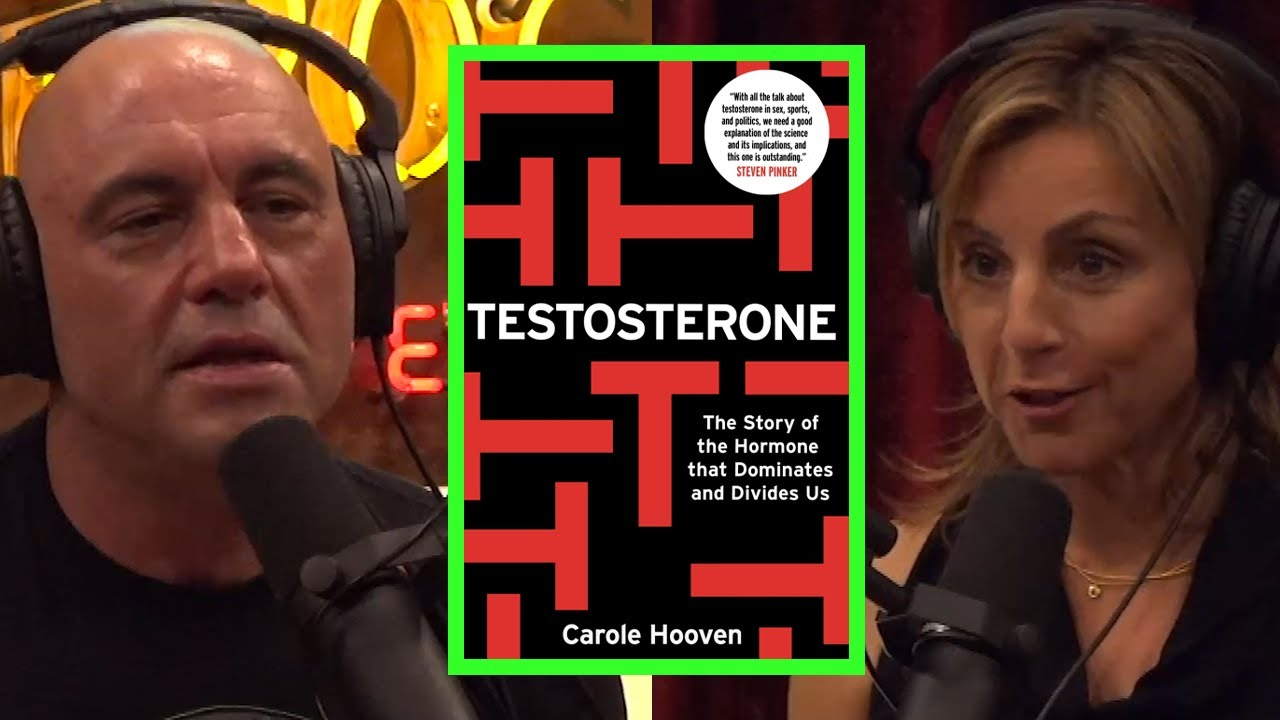“Uncertainty is an uncomfortable position. But certainty is an absurd one.”
~ Voltaire
Greetings from LA and Hawaii.
This week we interviewed a professional problem solver, posed a thought-provoking question about time and money, learned how testosterone impacts men and women, how fiction can predict international conflict, and how “nature” is the new nature. Our challenge is for you to answer the question in this email.
Problem Solving
This week we spoke with Andy Langenfeld, who has created and scaled business solutions for complex problems at companies like Wells Fargo, GE Capital, and Amazon.
When we asked him how he approaches complex problems (in business and in his personal life), here’s the system he gave us:
1. Define the problem — Understanding (as specifically as is possible/reasonable) what needs to be solved and the key components involved is critical to accomplish first. This avoids wasted efforts, poor quality solutions, unanticipated environmental dependencies, and helps remove a variety of bias that can be introduced by jumping right into proposing solutions upfront.
2. Envision an end-state or outputs — This perspective roots your successful solution in the correct outcome for customers or the business that will be using your solution. Depending on the size or complexity of the problem it is often useful to define short-, medium-, and long-term visions of success to guide your approach.
3. Triage — Apply your initial understanding from the first two steps to guide upfront prioritization and determine the type of solution needed. This step often requires high judgment and involves subject matter experts. This is valuable to increase the speed and accuracy of these early decision points.
4. Generating solutions — This step can take many forms depending on the problem; research, design, thinking, hypothesis generation, and experimentation, etc. Create a proof of concept or generate buy-in. It is rare that any problem of a decent size doesn’t require some level of organizational buy-in or approval. Leverage the stakeholders identified in step one to create support to move forward.
5. Deploy solution — Launch, build, buy, implement the process, invent, etc. the agreed-upon solution and drive adoption as appropriate.
6. Inspect and iterate — Ensure your outputs and expected results align with your vision periodically and where they no longer meet that need, treat it as a new problem and start at the beginning of this outline.
He finished by saying,
“Whenever you can take on the hardest problems in front of you; you won’t always succeed, but they are the most gratifying when you do, the most valuable as an employee or entrepreneur, and provide the most experience along the way.”
i.e. hard problems are the ones worth solving.
Q&A
I (Mike) posed this question on Facebook the other day. I didn’t come up with the question. A friend of mine asked me this question and I passed it on. But it’s thought-provoking nonetheless:
If you were going to immediately receive $50,000 for every year you sacrifice off the end of your life, how many years would you sacrifice?
This question forces us to wrestle with A) how much we value our time and B) how secure we feel financially in the present moment. The obvious “right” answer — if there is one — is that you shouldn’t sacrifice any time off the end of your life for money, because time is a person’s most limited (and valuable) resource. And yet, isn’t that what we all do every day when we go to work — sacrifice our time for money?
But there’s nothing wrong with that. Perhaps the lesson, then, is to live a life that’s meaningful to us, and if we were to take some money in exchange for our time (as we all do in one manner or another) perhaps that money would be best spent on something meaningful to us and, if possible, the time exchanged on a pursuit that we feel is worthwhile.
Here were some of the most thoughtful responses I received on Facebook…
“I would not. We overestimate the amount of time we think we have left, which inevitably works against us in regards to this question. Second, the money is grand, but I get paid already to do what I love to do. No reason to sacrifice a year when life is a valued experience, even in its hardship.”
“I wouldn’t sacrifice a day. My answer a few years ago would have likely been shaving off a few but now that I have a kid I feel like every day is more important.”
“Nope. I could die (50k x years)-tomorrow. Probably not a good idea to tempt fate.”
“10 years – and that’s hoping that I would make it till about 95 otherwise. 85 seems old enough… Debt gone; I’d buy an investment property or land to build housing, then do a masters program and travel a bit.”
Testosterone

On episode #1665 of The Joe Rogan Experience, Carole Hooven, the author of T: The Story of Testosterone, the Hormone that Dominates and Divides Us, provides interesting research and perspectives about how testosterone impacts males, females, and transgender people. She argues that it’s the driving hormone that creates differences between men and women, and she talks about what those differences are (and provides research to back it up). It’s insightful and worth listening to during your next car ride or workout.
Fiction & War
Can fiction book trends — what’s being written, criticized, and popularized — predict international conflicts?
In 2018, the German defence ministry approved Project Cassandria to see if fiction could be used to predict future conflicts.
Jürgen Wertheimer, who set up the project, envisioned it as a kind of “literary seismograph” that would detect ideological disturbances in a country, indicating a potential for future conflict.
“The researchers developed a risk score system with nine indicators for each book: thematic reach, censorship of the text, censorship of the author, media response, scandals around the text, scandals around the author, literary awards for the author, literary awards for the text, and narrative strategy. In each category, the book was assigned a score between –1 and +3: the higher the score, the more ‘dangerous’ the text.”
Surprisingly, it worked.
“But the literary seismograph’s instincts proved reliable. In February 2019, two years after Wertheimer’s team had identified Algeria as a region of interest, civil protests broke out in Algiers and several other cities, culminating in the resignation of President Abdelaziz Bouteflika.”
For reasons out of his control — and much to Wertheimer’s dismay — the project was cancelled (perhaps because of the pandemic and/or the reshuffling of government posts).
But in one of his final reports to the German defence ministry,
“Wertheimer had drawn attention to an interesting development in the Caucasus. The culture ministry of Azerbaijan had recently supplied libraries in Georgia with books carrying explicit anti-Armenian messages, such as the works of poet Khalil Rza Uluturk. There were signs, he warned, that Azerbaijan was ramping up propaganda efforts in the brewing territorial conflict with its neighbouring former Soviet republic.
Right again.
“War broke out a year later: 6,000 soldiers and civilians died in a six-week battle over Nagorno-Karabakh, an enclave of Azerbaijan populated by ethnic Armenians. Turkish President Recep Tayyip Erdoğan used the war to bolster his strongman image, hailing Armenia’s defeat in December as a ‘glorious victory’. Russia, traditionally allied with Armenia, successfully leveraged the conflict to consolidate its influence in the region.”
It turns out, fiction has more to say about reality than meets the eye.
“Nature”
In The 6th Extinction, Elizabeth Kolbert discusses how humans are causing a mass extinction the likes of which millions of years from now — if an intelligent race exists to examine it — will be easily detected by examining our small slice of the earth’s crust.
Most scientists agree that the extinction rate is hundreds or even thousands times higher today than the earth’s natural baseline rate.
But in Under a White Sky: The Nature of The Future, Kolbert talks about how “the very sorts of interventions that have imperiled our planet are increasingly seen as the only hope for its salvation.”
She talks about the reversal of the Chicago river — a $9.5 billion project — that kept pollution from entering people’s drinking water, the desperate attempt to keep the pupfish alive inside of Devils Hole in Death Valley, the attempt to “manufacture” coral that can tolerate higher oceanic temperatures, and more.
The book is equal parts inspiring and terrifying — human ingenuity is remarkable, but is it remarkable enough?
This Week’s Photo

“Enthusiasts practice yoga to mark International Yoga Day on the rooftop of ARA Yoga Caracas Studio in Caracas, Venezuela, on June 21, 2021.” via The Atlantic
Extra Stuff
Here are some additional articles that caught our eye this week…
- The sandwich order that brought two strangers together by Amelia Tait
- Pedestrianism- A Regency Fad by Georgian and Victorian Britain
- THE GHOST OF CLASSICS YET TO COME by ANTIGONE
Weekly Challenge
This week our challenge is for you to answer the question posed in the Q&A section of this week’s email — how willing are you to trade time for money? And if you follow that thread, are you spending that time on things that are meaningful to you? Are you spending your money on things that are meaningful to you? Feel free to respond with your answers if you like!
Until next week,
Mike & Alec
